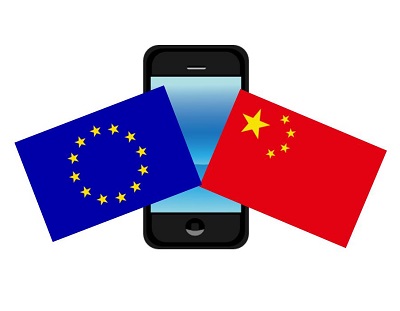These two regions are working together to decide on the details of this upcoming tech.
The European Union and China have now agreed to work together in order to be able to come up with a working definition for 5G mobile technology, which is a term that is already heavily used despite the fact that it has not yet been properly define.
So far, there hasn’t been a great deal of agreement that has occurred as a standard understanding of 5G.
Among the only things upon which everyone can agree when it comes to defining 5G mobile technology is that it is what will be built and purchased as the next phase after 4G. Therefore, any agreement that will occur between the E.U. and China could be quite an important one. The agreement will be an expansion of the foundation that occurred between the E.U. and South Korea, back in June 2014, as well as another one that was signed in May 2015 between the E.U. and Japan.
Many companies have already been tossing around their own definitions of 5G mobile technology.
 Many large players in the mobile tech industry have been talking about 5G for the last while, including Samsung Electornics and, even more recently, Verizon. In fact, in September, Verizon said that they were already working on building 5G networks. That said, actual definitions of the technology have not been provided along with the claims, which has left the industry and consumers somewhat in the dark as to what that actually means.
Many large players in the mobile tech industry have been talking about 5G for the last while, including Samsung Electornics and, even more recently, Verizon. In fact, in September, Verizon said that they were already working on building 5G networks. That said, actual definitions of the technology have not been provided along with the claims, which has left the industry and consumers somewhat in the dark as to what that actually means.
The definitions for 3G and 4G were created by standards bodies including the 3G Patent Partnership (3GPP) and the International Telecommunication Union (ITU). They have taken a much more measured tack toward creating their definitions.
The ITU plans to come up with its own name for 5G mobile technology at some point in October. The prediction has also been that the name will be International Mobile Telecommunications system 2020, as that is the year in which it has predicted that the first equipment for 5G will hit the market. That said, an actual technical standard for the tech likely won’t occur until February of that year.
A growing number of teams are finding that wearables are also helping to reduce the risk of injury.
Only three years ago, before wearable technology was as commonplace in the form of fitness trackers, it wasn’t uncommon for teams to use large, complex machinery to attempt to understand an athlete’s movements and habits in order to prevent injury and boost performance.
This was the case at the University of Toronto, where the varsity team had been using “what looked like a lab tool.”
This, according to engineer Rami Nabel, who was a student at the time and was weight training when he saw the tracking equipment used to try to track and analyze the performance of the varsity team. Nabel explained that the device that was used “was really intricate. There was a tripod, a display screen and a big box on the ground, with lots of wires everywhere.” Nowadays, though, wearable technology is accomplishing many of the same goals as that lab-style equipment, but in a much simpler way and at a much lower cost.
Nabel is now the founder and CEO of a fitness tracking wearable technology company called Push Inc.
 Push is enabled by smartphones and is based on an armband that the athlete wears in order to be able to track and analyze various different factors throughout strength training. The device s currently being used by more than 25 professional teams around the globe and, according to Nabel, “we’re growing in the college and amateur market as well.”
Push is enabled by smartphones and is based on an armband that the athlete wears in order to be able to track and analyze various different factors throughout strength training. The device s currently being used by more than 25 professional teams around the globe and, according to Nabel, “we’re growing in the college and amateur market as well.”
This plays into a rapidly growing trend that is using wearables to help to measure performance, and the companies that are grabbing hold of a part of this trend are finding that they can make a place for themselves relatively quickly at the moment, simply because the market has yet to reach its saturation point.
According to the Canadian City of Hamilton’s business development manager, Norm Schleehanhn, “We see performance analytics as an area ripe for growth.” In July, that city announced that the surrounding area would be focusing on this field in order to become a center of excellence within performance and wearable technology. “Tech companies can take advantage of our excellent sports facilities, world-renowned health networks and post-secondary institutions to create useful partnerships.”
 Many large players in the mobile tech industry have been talking about 5G for the last while, including Samsung Electornics and, even more recently, Verizon. In fact, in September, Verizon said that they were already working on building 5G networks. That said, actual definitions of the technology have not been provided along with the claims, which has left the industry and consumers somewhat in the dark as to what that actually means.
Many large players in the mobile tech industry have been talking about 5G for the last while, including Samsung Electornics and, even more recently, Verizon. In fact, in September, Verizon said that they were already working on building 5G networks. That said, actual definitions of the technology have not been provided along with the claims, which has left the industry and consumers somewhat in the dark as to what that actually means.
 Push is enabled by
Push is enabled by 